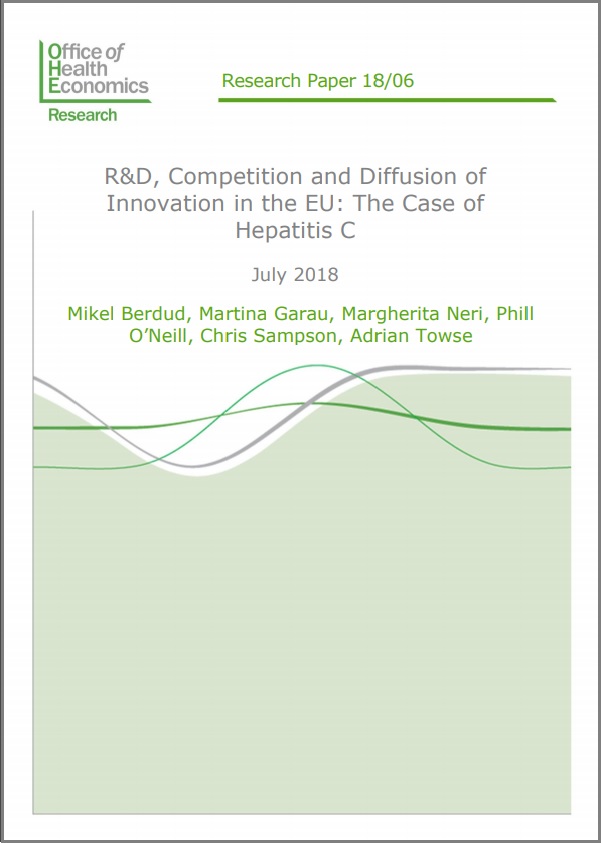Using a multidisciplinary methodological approach combining a theoretical economic framework with uptake/market share analyses by country and interviews, this OHE research concludes that: (i) IP incentives…
Using a multidisciplinary methodological approach combining a theoretical economic framework with uptake/market share analyses by country and interviews, this OHE research concludes that: (i) IP incentives for R&D may have encouraged a high degree of in-class competition of DAAs close to the first entrant launch; (ii) in-class competition had a positive impact on uptake and adoption of DAAs in the top-5 European countries and; (iii) although in-class competition is a necessary condition for early adoption and fast uptake of innovative medicines, it is not sufficient as there are other factors related to the performance of the new technology, characteristics of the healthcare system and political factors which can have an effect.
Using a multidisciplinary methodological approach combining a theoretical economic framework with uptake/market share analyses by country and interviews, this OHE research concludes that: (i) IP incentives for R&D may have encouraged a high degree of in-class competition of DAAs close to the first entrant launch; (ii) in-class competition had a positive impact on uptake and adoption of DAAs in the top-5 European countries and; (iii) although in-class competition is a necessary condition for early adoption and fast uptake of innovative medicines, it is not sufficient as there are other factors related to the performance of the new technology, characteristics of the healthcare system and political factors which can have an effect.
In the pharmaceutical industry, intellectual property (IP) rights protection including patents, data exclusivity (DE), and supplementary protection certificates (SPCs), are important due to the high costs of research and development (R&D) for new medicines and the issue of appropriability, a concept that reflects innovator’s capacity to capture or appropriate the added value created by successful innovation.
Problems can arise if the amount of appropriation is too low or too high. A low degree of appropriability could result in dynamic inefficiency or a suboptimal (too low) investment in innovation. However, too much IP protection might grant the originator market power for an excessive period. Such market power enables prices above manufacturing and distribution cost to give a return on R&D, but results in static inefficiency, whereby innovative medicines are not used by some patients/countries/systems.
This research paper by OHE contributes to this debate by analysing the functioning of a specific market for innovative treatments, Direct Acting Antivirals (DAAs) for hepatitis C virus (HCV) in six European countries. The authors explore potential for in-class competition for DAAs to offset innovators’ market power and to maximise the social welfare generated by the adoption of pharmaceutical innovation via lower prices.
Using a multidisciplinary methodological approach combining a theoretical economic framework with uptake/market share analyses by country and interviews, this OHE research concludes that: (i) IP incentives for R&D may have encouraged a high degree of in-class competition of DAAs close to the first entrant launch; (ii) in-class competition had a positive impact on uptake and adoption of DAAs in the top-5 European countries and; (iii) although in-class competition is a necessary condition for early adoption and fast uptake of innovative medicines, it is not sufficient as there are other factors related to the performance of the new technology, characteristics of the healthcare system and political factors which can have an effect.
